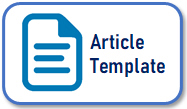Islamic Currency Swap: Can Be The Best Way to Hedge Indonesia Hajj Fund?
DOI:
https://doi.org/10.14421/grieb.2018.062-06Keywords:
Hajj Fund, Islamic Currency Swap, Efficiency.Abstract
The operational costs of Hajj in foreign currencies will always face the risk of changes in exchange rates. Hajj operational costs will continue to grow in line with the increasing number of pilgrims. But at present, the government (BPKH) does not have a currency hedging policy to reduce the risk of fluctuating currency values. Hajj operational costs are saved in rupiah, dollar and riyal currencies. As a result, deposits of pilgrims will continue to be overshadowed by the reduction in value due to the depreciation of the rupiah against the dollar and riyals. Hedging policy is a necessity in the management of Hajj funds. This study will use an Islamic currency swap simulation analysis. According to the MUI DSN No 96 in 2015, a swap is a contract that starts a spot transaction followed by a forward agreement by setting a forward exchange rate. Then it is settled by spot transactions using the agreed forward exchange rate. The results of the study show that the dollar and riyal in 2018 are in a state of high volatility, so hedging is needed to reduce cash outflows. Based on analysis, Islamic currency swap can be the best hedging to the operational costs of Hajj in USD is with tenors 30 days, 180 days, 360 days. while the operational costs of Hajj are in Saudi Arabia Riyal currency, efficient in overnight tenors, 30 days, 90 days and 180 days.
Downloads
 Abstract viewed: 712 times
|
Abstract viewed: 712 times
|
 PDF downloaded = 799 times
PDF downloaded = 799 times
References
Ahmad, A. A., & Ahmad, S. (2014). Inovasi Pemakaian Prinsip Wa ‘ dan dalam Instrumen Lindung Nilai Islam ( Innovation in Applying the Principle of Wa ‘ dan in Instrument of Islamic Hedging ), 36(1), 21–32.
Ahmed, & Hunt, K. (2013). CONTEMPORARY ISLAMIC fINANCE. Hoboken, New Jersey: John Wiley & Sons Ltd.
Arsyi, W. A. (2016). Simulasi islamic forward agreement pada pembiayaan valas bank syariah di indonesia. Universitas Indonesia.
Clauss, F. J. (2010). Corporate Financial Analysis with Microsoft Excel. The McGraw Hill.
Danielsson, J. (2015). Financial Risk Forecasting. West Sussex: Wiley Finance.
Hull, J. C. (2015). Risk Management and Financial Instiutions.
Islamic Development Bank. (2001). Risk Management: An Analysis of Issues in Islamic Financial Industry.
Jorion, P. (2007). Foreign Exchange Risk Management.
Kementerian Agama. (2016). Laporan Dana Haji 2015.
Khan, M. A. (2005). Islamic Economics and Finance : A Glossary. London: Routledge.
Laporan Dana Haji. (2016). Kementerian Agama Republik Indonesia
Llp, O. (2016). New product documentation for Islamic Foreign Exchange Forwards, (June).
Mohamad, S., Othman, J., Roslin, R., & Lehner, O. M. (2014). The use of Islamic hedging instruments as non- speculative risk management tools. Venture Capital. Taylor & Francis. https://doi.org/10.1080/13691066.2014.922824
Murphy, D. (2008). Understanding Risk: The Theory and Practice of Financial Risk Management. London: Taylor & Francis Group, LLC.
Nugroho, R. C. (2015). Konsep Lindung NIlai Dalam Transaksi Keuangan Syariah, (2015).
Oberlechner, T. (2004). The Psychology of The Foreign Exchange Market. West Sussex: John Wiley.
Sawyer, T. Y. (2015). Financial Modeling for Business Owners and Entrepreneurs.
Siregar, L. A. (2015). Pengukuran Potensi Kerugian Indeks Bursa Saham dengan Pendekatan VaR Volatilitas EWMA dan GARCH (Studi Pada 8 Indeks Periode Agustus 2017-Desember 2012). Universitas Indonesia.
Steiner, B. (2010). Foreign Exchange and Money Markets.
Suwailem, S. (2006). Hedging In islamic Finance. Jeddah: IDB-King Fahd National Library.
Tarantino, A., & Cernauskas, D. (2009). Management in Finance. John Wiley.
Zenios, S. A. (2006). ASSET AND LIABILITY MANAGEMENT. (W. T. Ziemba, Ed.). Elsevier.
News References
https://bpkh.go.id/detail/indeks/berita-dan-peristiwa/423-Media-Briefing-BPKH
https://bpkh.go.id/detail/indeks/berita-dan-peristiwa/384-BPIH-akan-Ditetapkan-pada-Februari-2019
Downloads
Published
Issue
Section
License
Global Review of Islamic Economics and Business is licensed under a
Creative Commons Attribution-ShareAlike 4.0 International License



















